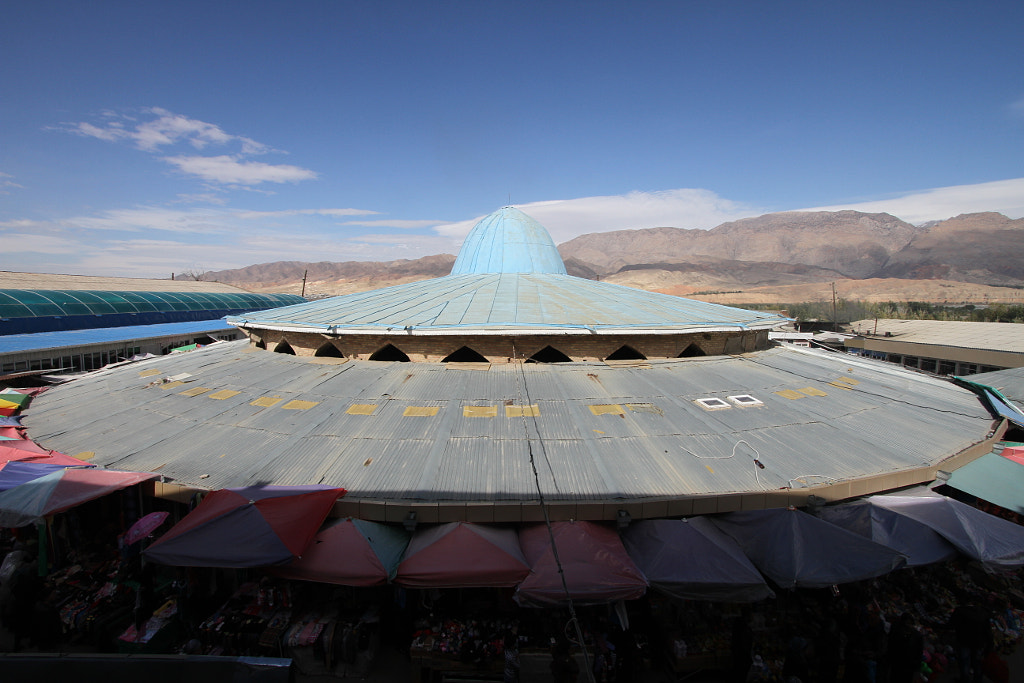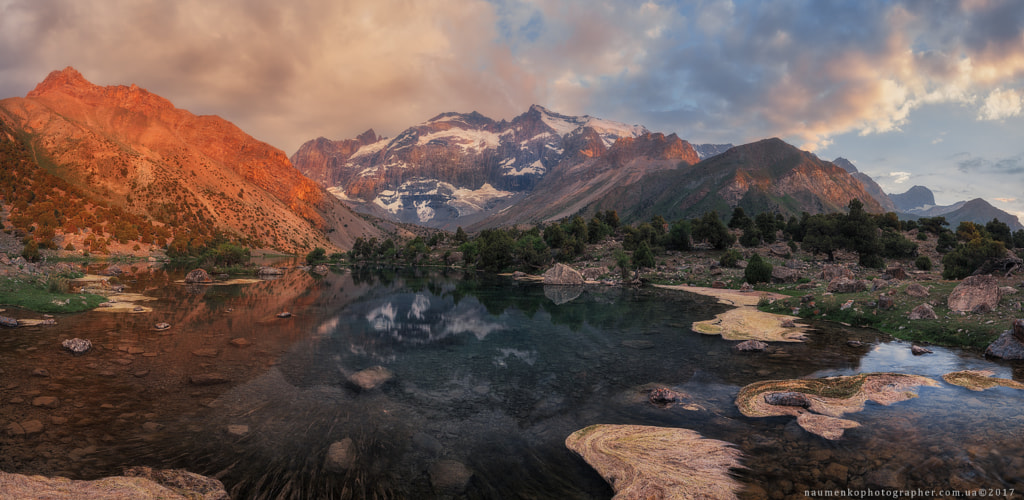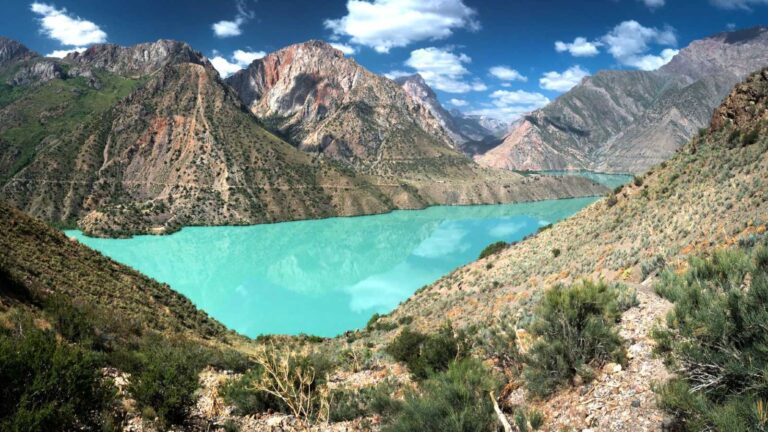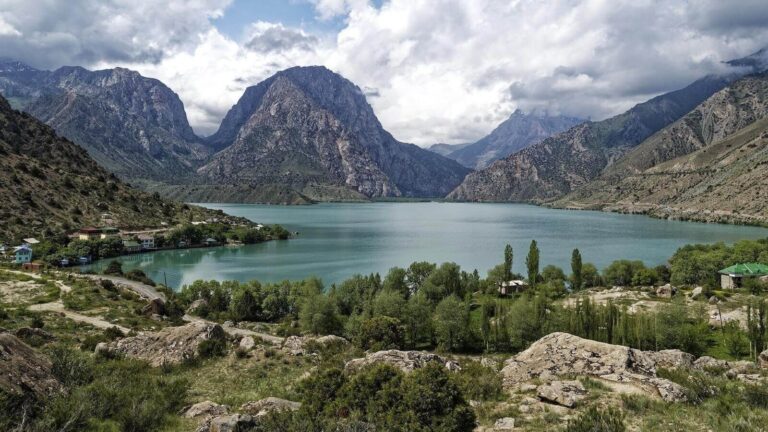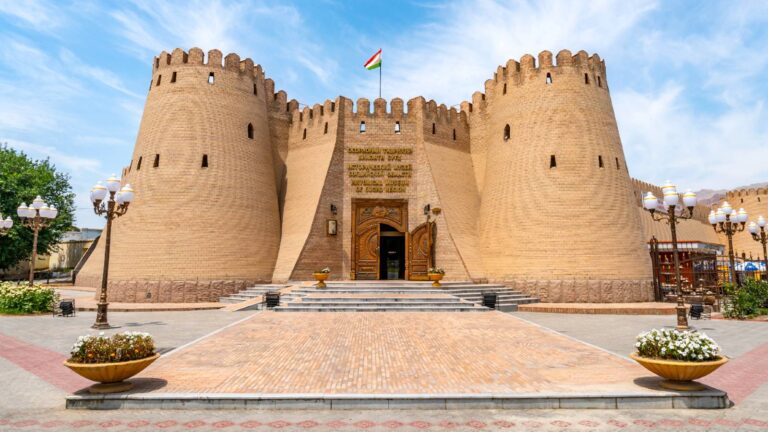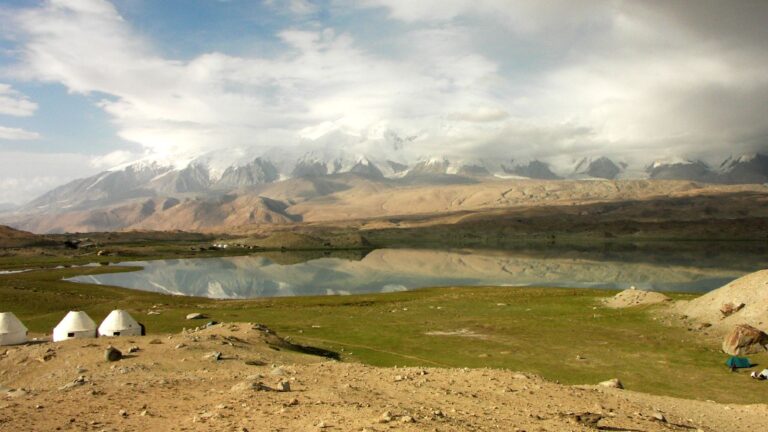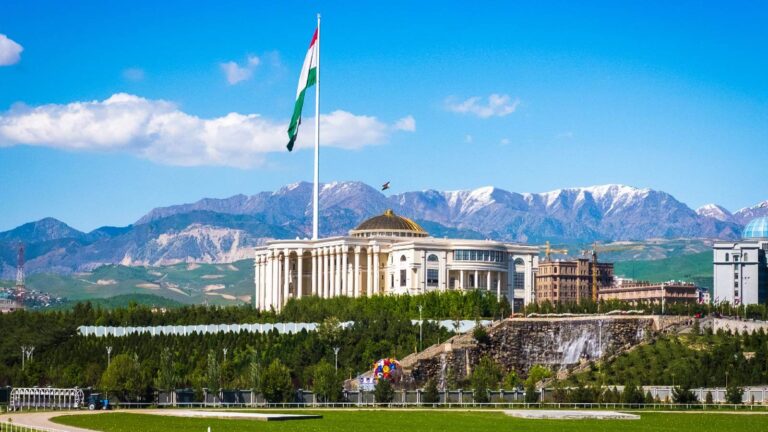You can get to Panjakent from Dushanbe along the Dushanbe-Chanak toll highway, or first fly by local airlines to Khujand, and then transfer to a car or taxi. Arriving from Samarkand via the Jartepa-Sarazm border checkpoint, you can travel by car or use an intercity bus that requires a ticket purchased in advance.
Panjakent’s main avenue is named after Abuabdullo Rudaki, the founder of Persian-Tajik poetry. He was a poet, scientist and encyclopedist, whose roots come from the Sughd village of Panjrud, some 60km east of the city.
The Republican Museum of Local Lore named after A. Rudaki was founded in 1958 in honour of the 1,100th anniversary of the poet’s birth. The museum has one of the largest collections in Tajikistan. It includes more than 98,000 items, most of which are archaeological finds.
In the eastern part of Panjakent there is a small mosque-madrasah built in the 19th century, called Olim Dodkho.
Located 1.5 km south-east of the modern city, above the left-bank floodplain of the Zeravshan river and on a low hilly ridge, is Sarazm. It is the first known settlement of Penjikent and considered to be the oldest known settlement of the proto-urban type in the world, first inhabited 5,500 years ago.
The word Panjakent means “five villages”. It is quite possible that many centuries ago, before the city was formed, there were five villages in the district, which later merged into one.
Panjakent is rich in history and architecture. Home to poets and commanders. mosaics on residential buildings, teahouses, colourful markets with an abundance of fruits and vegetables.
Sughd celebrates both national holidays (the largest of them being Navruz) and local ones. For example, periodically the region becomes the centre of the country’s plov (pilaf) festival, holds events in honour of the poet and philosopher Abuabdullo Rudaki (September 22), and celebrates the harvest month in October.
The Sughd region borders the regions of Jizzakh and Samarkand in Uzbekistan. It is located in the Zeravshan Valley: on the north side it is surrounded by the Turkestan ridge, and on the south side by the Zeravshan ridge. In the western part, the mountainous part of the Samarkand plain and the continuation of the Zeravshan valley begin.
The climate of the region is subtropical inland, with hot and dry summers and cold winters. The average annual temperature is +16.5ºС, the average temperature in January is -1.0 ºС, the average temperature in July is +25.0 ºС. The absolute minimum temperature was -28 ºС, and the absolute maximum was +55 ºС.
Cattle breeding, agriculture (including grain growing), horticulture and viticulture are developed in the Sughd region. There are also farms for beekeeping, poultry farming, fishing and cultivation of mountain medicinal herbs.
In Sughd region there are deposits of marble and granite, as well as enterprises for its processing. There are enterprises for the production of bricks and other building materials, and food products. There are about 15 industrial enterprises, some of them are joint ventures. The most famous is the Zarafshok Sino-Tajik gold mining joint venture, which is the only major gold mining enterprise in Tajikistan.

